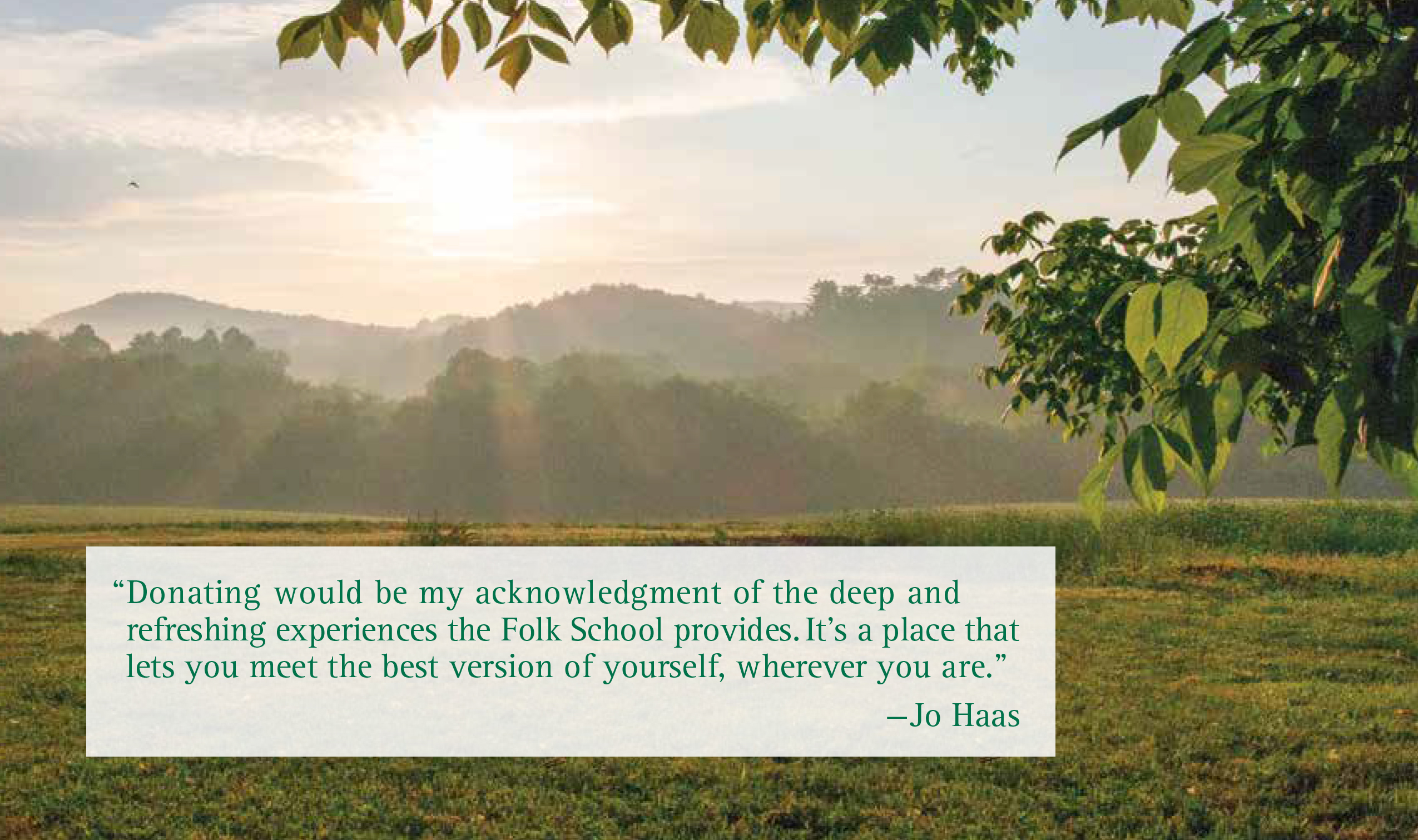14 Oct Appalachian Traditions with Brasstown Carver Helen Gibson
Join us in welcoming Helen...

Join us in welcoming Helen...
While we continue to monitor...
Lyle Wheeler, a longtime Folk...
Join us every Friday morning...
The days have pushed themselves...
Wishing you a happy May...
As we enter a new...
We are encouraged by the...
One of Pepper’s specialties is...

“Our worlds are crazy. We have so many demands on our time and attention, and we get so wrapped up in delivering for other people.” Jo was seeking something that would kick off the first week of an annual four-week sabbatical; one that would be decidedly “therapeutic and peaceful.”
“I didn’t use my car once the entire week. I slept in Mill House and would walk up that hill through the mist each morning to Keith House for MorningSong. Like where else do you get that: someone singing to you in the morning while you drink your coffee?!”


